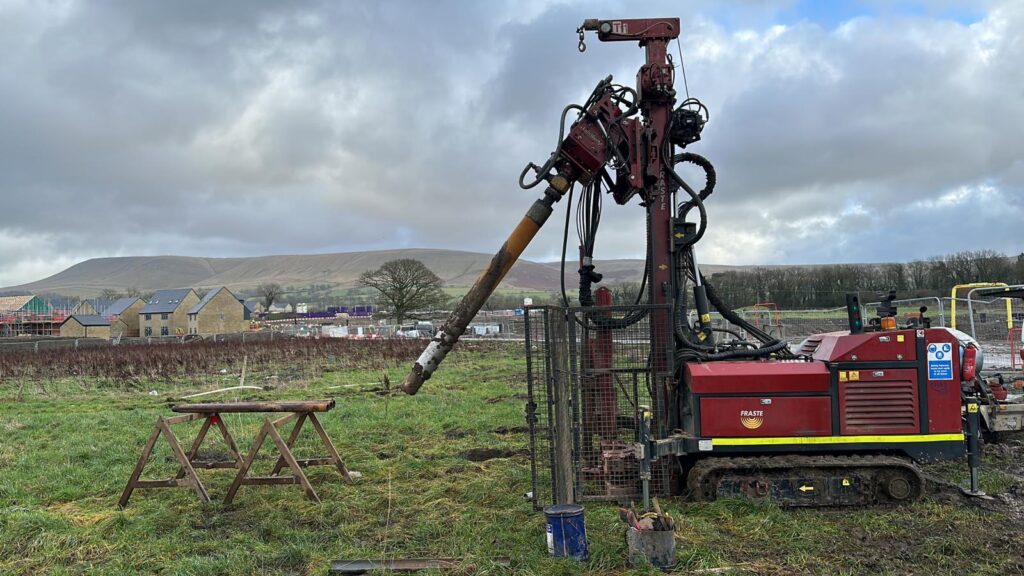What Environmental Impact Assessments mean for construction
John Rodgman, Managing Director at geotechnical drilling firm, Borehole Solutions, explains why EIA reporting is now standard across new developments, despite the law trailing behind.

As climate change and sustainable living practices continue to take centre stage across the planet, the impact of people and businesses on the environment has become more scrutinised than ever. Industries such as construction, in particular, have long been subject to constant criticism following their significant contribution to global carbon emissions and environmental degradation.
It is therefore of no surprise to see growing pressure from communities, activists, and authorities alike prompt the instigation of Environmental Impact Assessments (EIAs) as a critical stage within any project’s planning stage. Legally, these regulations only apply to specific larger developments – power plants, or chemical treatment works. But this hasn’t stopped EIAs from quickly becoming a staple throughout the industry as a whole.
What is an EIA?
As the name gives away, an environmental impact assessment is primarily used to identify any environmental issues which could arise – directly, or indirectly – from the project in question. Some of the factors these assessments may identify include, but are not limited to: the quality of groundwater, the presence of contamination, and damage to the native ecosystem.
Under the EIA Regulations 2017, developments which fall within ‘Schedule 1’ – such as power plants, for example –will always require an EIA as a prerequisite to any project. Those in ‘Schedule 2’, however, may require an EIA, but only if the likelihood of negative effects on the environment are considerable. The actual scope of these assessments, however, is incredibly broad, so there’s a high chance you’ll have to fill out an EIA of some description to carry out the majority of projects.

The Five-step EIA Process
As outlined under UK Government regulations, there are five main stages to any successful EIA. Firstly, a general inspection of the proposed development is made to ascertain its potential environmental impact, and discern whether full assessment will be required.
The second step – scoping – outlines the extent of the issues which need consideration, within the subsequent assessment should it be deemed necessary. Clarity can be provided by the local planning authority if needed, in the form of a ‘scoping opinion.’
Should the assessment be necessary, the next steps are to carefully prepare and submit an environmental statement. This lays out in greater detail all of the possible environmental impacts that could arise during, and after construction. Further insight into the proposed use of the completed development, any potential emissions and forms of pollution (air, water, land, noise), and how it is expected to comply with planning policy will also factor. The submitted statement is available to the public.
Finally, upon submission, local authorities will take time to determine whether or not to proceed with development as proposed, after careful consideration of benefits and environmental risks. In particularly large, public projects with significant associated concerns, the Secretary of State will often have a say in the outcome.
The role of EIAs in environmental conservation
EIAs should by no means halt the plans of developers or their proposed projects. Instead, they should bring about necessary changes to minimise negative environmental effects before development begins. By identifying and addressing these issues at an early stage, EIAs contribute to sustainable development by recognising new and innovative ways to achieve environmental objectives, rather than simply remedying issues the development has already created.
EIAs can also help to guide decision-making towards greater sustainability within future developments. Whether that’s by exploring the possibility of incorporating eco-friendly features and architecture within these developments, designing future projects to better avoid these negative impacts, or something else entirely. Simply put, EIAs are, and will continue to be, a significant tool in project planning.

What testing services are out there?
Prior to submitting an EIA, it is relatively common for developers to undertake a range of testing procedures to understand the state of the intended project site prior to development. At this stage, they will also identify solutions to support remediation alongside the project’s individual ecological impact.
This could include sample testing to collect and analyse high quality soil samples; contamination testing to investigate whether any hazardous substances are present on the site; or Waste Acceptance Criteria (WAC) testing to determine whether organic material on the site is suitable to be safely disposed of, or whether additional measures may be required.
Looking for more long-reads? How about our recent feature, which looks at advice from behavioural and public relations experts on running effective public messaging campaigns.
Images: John Rodgman / Borehole Solutions












